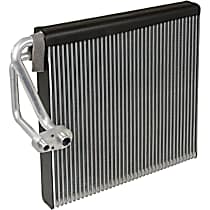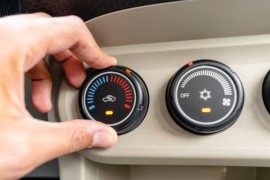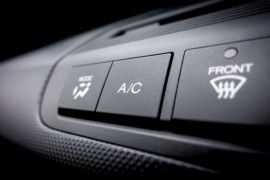{
"lazyNodes": false,
"abFitnotesFlag": false,
"abCrawlReviews": false,
"productOptionsCookie": false,
"orderDelayFlag": false,
"skipSessionCookie": false,
"covidMessage": false,
"fullTitleCookie": false,
"nrLoggerCookie": false,
"checkoutReviewCookie": false,
"productOptionSeqCookie": false,
"maintenanceFlag": false,
"bufferETACookie": false,
"multiShippingDiscountFlag": false,
"newFitmentFlag": false,
"surveyOptInFlag": false,
"crossSellFlag": false,
"skuMappingFlag": false,
"paySplitCookie": false,
"callDisableFlag": false,
"zipPaymentFlag": "u",
"hassleFreeReturn": false,
"lifetimeReplacement": false,
"cpn_off": false
}Need Help? Call Us1-866-529-0412
2020 Ford Fusion
2020 Ford Fusion A/C Evaporators
Refine by:
Shop Catalog
Showing 1 - 1 of 1 results
Sort by:
Part Number: GPD4712157
Guaranteed to Fit
$89.99
Vehicle Fitment
- 2020 Ford Fusion SEL 4 Cyl 1.5L
- 2020 Ford Fusion SE 4 Cyl 2.5L
- 2020 Ford Fusion S 4 Cyl 2.5L
- 2020 Ford Fusion SE Hybrid 4 Cyl 2.0L
- 2020 Ford Fusion SE 4 Cyl 1.5L
- 2020 Ford Fusion Energi SEL 4 Cyl 2.0L
- 2020 Ford Fusion Titanium Hybrid 4 Cyl 2.0L
- 2020 Ford Fusion Energi Titanium 4 Cyl 2.0L
- 2020 Ford Fusion Titanium 4 Cyl 2.0L
- 2020 Ford Fusion SEL Hybrid 4 Cyl 2.0L
- 2020 Ford Fusion SE 4 Cyl 2.0L
Product Details
Quantity Sold : Sold individuallyReplaces OE Number : EG9Z19B555C, EG9Z19B555DWarranty : 1 year GPD limited warrantyProp 65 Warning :
![]() WARNING: This product can expose you to chemical which is known to the State of California to cause cancer and birth defects or other reproductive harm. For more information go to www.P65Warnings.ca.gov.
WARNING: This product can expose you to chemical which is known to the State of California to cause cancer and birth defects or other reproductive harm. For more information go to www.P65Warnings.ca.gov.
Page 1 of 1 | Showing 1 - 1 of 1 results
Popular Products

GPDA/C Evaporator - Sold individually, Aluminum MaterialManufacturer #4712157
( Reviews) Questions, Answers
For dependable A/C Evaporators, always rely on GPD. These A/C Evaporators are designed and manufactured from high quality components to meet or surpass OE requirements and specifications. With its high standard facilities, these AC parts assure quality and functionality like no others....
Helpful Automotive Resources
Where Is the A/C Evaporator Located?If you aren’t familiar with how to remove the entire instrument panel, it’s best not to even try this. Further, the refrigerant must be removed properly (never vent it to the atmosphere) before removing the evaporator. Always wear skin and eye protection when working around refrigerant systems.
.kadence-column_0fa37b-88 > .kt-inside-inner-col{border-top-width:0px;border-right-width:0px;border-bottom-width:0px;border-left-width:0px;}.kadence-column_0fa37b-88 >
A Comprehensive Overview of Air Conditioning and Heating in VehiclesTo put it simply, the air conditioner blows cool air to lower the temperature inside the cabin. It keeps passengers cool, lowering humidity along with the temperature, bringing comfort and peace of mind on hot and humid days.
Does A/C Waste Gas? + Tips to Improve Fuel EconomyAn A/C system works by cycling refrigerant, turning it from a gaseous state into a liquid, and then back again. To change the refrigerant between a liquid and a gaseous state, the A/C system works to control pressure and temperature. By the end of this cycle, the refrigerant has turned
How to Get Unpleasant Smells Out of Your CarActive charcoal has a wide surface area with many micro pockets and holes, making this material perfect for absorbing unpleasant odors. All you need is to purchase a bag of charcoal briquettes and leave it open in your car overnight.
Try Baking Soda
Symptoms of a Bad A/C Evaporator and Other FAQWarm air blowing from the register can mean low refrigerant, which can be due to the evaporator leaking refrigerant.
Inconsistent Air Temperature (Can be Due to Low Refrigerant)
Does Your Car Smell Like Burning Oil? Here’s WhyMake sure to address oil leaks immediately because low engine oil levels can affect your engine’s mechanical health. Oil lubricates the metal parts of your engine. Oil molecules create a liquid barrier between metal parts like the crankshaft and its connecting rod bearings and between the crankshaft’s main bearings in








